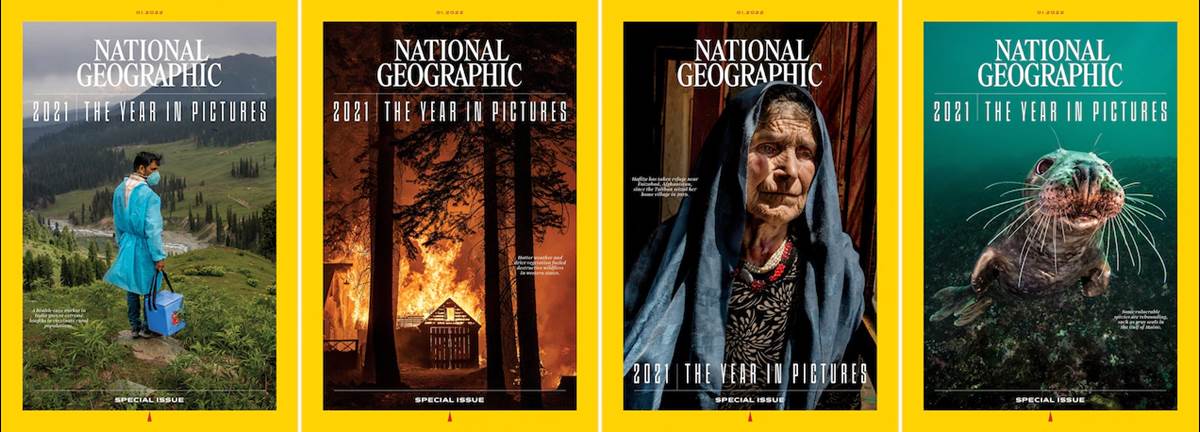Go Behind National Geographic’s 2021 Year in Pictures Issue with Season 8 Finale of “Overheard at National Geographic”
Overheard at National Geographic closed out 2021 and the 8th season of the podcast with a behind-the-scenes look at the first magazine issue of 2022. The 2021 Year in Pictures issue hits newsstands on December 15th and in this episode, magazine editor Peter Gwin talks with Whitney Johnson, National Geographic’s director of visuals and immersive experiences, to talk about how this issue takes shape each year. Here is a recap of “Capturing the Year in an Instant.”

(National Geographic)
Collecting photographs from over 300 assignments around the world resulted in almost two million images for Whitney Johnson and her photo team to go through. In the process, it was decided that the Year in Photos issue would focus on four themes: COVID, conflict, climate, and conservation. This also led to a decision to offer four different covers for the issue.
Whitney Johnson explains what she’s looking for not only when selecting photos for print, but also for the year-end retrospective - photos that are mesmerizing. Whitney also works with photographers to find out of they also have storytelling skills, which is how National Geographic gets its pool of first-class photographers.
The episode includes two guest photographers whose work can be found in the Year in Pictures issue. Lynsey Addario is on a year-long fellowship with the National Geographic Society focusing on how climate change affects women and children. On that mission, she was in California in August where she captured images of the Caldor wildfires by Lake Tahoe. A conversation arose around safety, with Lynsey telling a story about burning embers falling on the back of her neck while she captured some of the shots. Whitney says part of the job requires photographers to work safely and responsibly while also taking good pictures. In this case, it was a fire, but other assignments put photographers in conflict zones or in the midst of other natural disasters. Lynsey captured nearly 24,000 images on this assignment alone, one of them becoming one of the four covers above.
The other guest photographer in this episode is Muhammad Fadli from Indonesia, who is new to the National Geographic family. His assignment was to capture how COVID was affecting his country and one of the places he went to was a mass burial site in North Jakarta where he photographed the arrival and burial of bodies. A photo that caught Whitney’s eye featured a family mourning at a grave, surrounded by many others, with yellow trucks digging more graves in the distance. The photographer also had to get creative, using his drone to capture the scope of people waiting to get vaccinated because he couldn’t photograph the entirety of the line from the ground.
Finishing with a look ahead, Peter Gwin and Whitney Johnson talked about some of the ways technology is helping National Geographic continue to tell stories visually. Through a partnership with Spark AR on Instagram, Nat Geo was able to let people take a selfie on Mars using the first images sent to Earth from the Perseverance rover. Photographers are also capturing audio recordings that accompany their photographs in digital media. For an organization founded in 1888, National Geographic has no intentions of slowing down anytime soon.
Click here to listen to Overheard at National Geographic.


